Your New Year’s resolution probably sucks. And mine have, too.
Think about it:
Are you even still doing your New Year’s resolution from this year? What about the New Year’s resolution you made in 2016?
Anybody? Anybody at all? Buehler???
But it’s not your fault your New Year’s resolutions failed. Not for the reasons you think, at least.
Here’s what I mean:
When you set up a goal based purely on motivation and willpower, you set yourself up for failure. Why? Motivation and willpower are fickle. They only last a few weeks—at most. And they can backfire on you, convincing you that you’re to blame for always failing on your goals — instead of how society has taught us to approach goals.
Here’s the good news:
There’s a better way to set goals. A way that uses motivation’s and willpower’s fickle nature to your advantage. And a way that helps you conquer any goal you set without fail.
In this episode, you’ll discover this improved way to set goals and build habits, so you can conquer your goals throughout 2023.
Listen now.
The Better Man Podcast is an exploration of our health and well-being outside of our physical fitness, exploring and redefining what it means to be better as a man; being the best version of ourselves we can be, while adopting a more comprehensive understanding of our total health and wellness. I hope it inspires you to be better!
Watch a Clip From Episode 038

Episode 038 Highlights
- Why relying on motivation and willpower to accomplish your New Year’s resolution guarantees you’ll fail (and what to do instead) (1:58)
- The 2 best habit mindset books which increase the likelihood you’ll conquer your goals (3:15)
- The “Habit-Based Goals” mindset tweak for crushing every goal you set (4:50)
- Why your motivation and willpower disappears after a couple of weeks (and how to use this as an advantage towards accomplishing your goals) (8:03)
- How asking yourself a few key questions unlocks an indestructible sense of discipline for tackling your goals (14:45)
- Why reducing your New Year’s resolution to only a few weeks instead of the whole year actually makes it easier to do it for the entire year (17:06)
- The “Gold Star Chart” Method for erasing overwhelm about your goals, so you stick with them (20:27)
- The simple 6-step system for achieving every goal you set for yourself without fail (28:02)
Hey, guys, it’s Dean. Welcome to the Better Man podcast. Today is a solo episode, and I’m going to be talking about New Year’s resolutions and specifically on how to set goals that don’t suck. And what I mean by that. So I’m going to ask you a question how many of you are still following the New Year’s resolutions that you made in 2016?
Probably nobody. And the reason why you’re probably not following that is because as a society, we have an incomplete or an inaccurate understanding of how to set sustainable goals for ourselves. You know, most New Year’s resolutions involve something like, I will lose 15 pounds in three months or I will run every day And when we make goals like that, it’s really hard to follow through with them.
They’re not trackable There’s no timeline on them. And a lot of the time and most of the time, what we do is we set up these goals and we purely rely on motivation and willpower to do them. And that is setting ourselves up for failure, especially if we’re not doing anything to make that desired behavior easier, both by scaling it down or altering it so that it takes less time or work but also because we’re not doing enough to support ourselves to create the environment that encourages us or increases the likelihood of us doing it.
So there’s a better way to do that. And that’s what I want to talk about in this short solo podcast, because I want you to make goals that are attainable. I want you to start thinking about creating new habits in a way that is going to encourage you to make more because you’re successful with them. And in order to do that, I’m going to give you a few criteria.
So I’m going to start off by going into some key ideas that you should consider when it comes to making new habits. And a lot of these are based on behavioral science Habit focused books. My two favorite books are Our Atomic Habits by James Clear and and Tiny Habits by B.J. Fogg. And then I’m also going to give you what the exact formula that has worked for me when it comes to me designing my own goals So I’ll go through go into that and the ones that have that have helped me, that have helped me the most.
So then I’ll start off by just saying I’ve done a lot of reading on behavior science. I mentioned those two books. But beyond that, I have also applied that knowledge practically So I’ve done a lot of work with one on one training people, one on one. I’ve done a lot of work implementing this into the infrastructure in the Man flow yoga members area and app, and I have tested this on myself very frequently.
I tend to continue to read these books on a regular basis. To keep these ideas fresh in my mind so that I’m always approaching my life kind of as a habit tinker or sort of speak so that I’m so that I’m doing things in a way that helps me implement new habits and make sure that they’re working and if they’re not, then revising the strategy and, and trying something new.
So I’m going to start off by talking about some ideas, some key ideas that you should consider when it comes to making your habits. And the first thing I want to talk about is aspirations versus habit based goals and an aspiration is something like I want to eat healthier. Whereas a habit based goals is I will cook dinner for myself three times per week.
One of these is measurable And one is not. We want to focus on the latter. We want to focus on habit based goals because they’re easier to track. We can easily identify if we’re doing it. And we can also we can also easily diagnose it and try and come up with a fix for it if it’s not working.
If we say I want to eat healthier and then we realize we’re not eating as healthy as we want to be, that’s because there’s no sense of there’s no clarity. There’s no sort of track ability connected to the I want to eat healthier. It’s is good. It’s an aspiration and it’s a good aspiration. But in order for us to actually eat healthier, we need to come up with a specific behavior that we can track in order to eat healthier.
The second thing that you want to do is make habits realistic. You know, for example, if your goal is to start doing yoga more frequently, but you don’t do any yoga right now, then it’s going to be really tough for you to set a goal of doing yoga for an hour every day and then being consistent with that.
Right. That’s that’s kind of just setting yourself up for failure. There’s there’s no sort of foundation of habit established. It takes up a lot of time. It takes up a lot of motivation. So it takes a lot of motivation. It takes a lot of ability. And those are two things that we need to make sure are relatively low when it comes to us creating a new habit and making one that is realistic.
So we want to make sure that this new habit isn’t too inconvenient. We want to be able to plan it for a time that we have sufficient energy for it. For example, if you plan on doing your workouts the first thing in the morning, but you feel like poop in the morning and you have no energy or no motivation to work out and it’s going to be really tough.
And then you should also make sure that your new desired habit occurs in a reasonable time and location in relation to your existing schedule and obligations. So the habit should realistically fit into what you already do on a day to day basis. You know, it doesn’t make sense to say, I’m going to start going for a hike three times per week, but the place that you want to hike is 30 minutes away.
You don’t have a specific time that you want to do it at. And that’s just a lot of that takes a lot of motivation. It takes a lot of time. So ideally, a better way to think about this would be I’m going to go for a walk, you know, for 5 minutes a day. Around my house because that’s something that’s, you know, and, you know, it’s probably it’s winter.
I understand it’s cold outside. Might not be practical for many, many of you, but that’s more practical than driving 30 minutes somewhere to go for a walk. So we want to make sure that the habit is realistic. That’s something Another part of that, making a habit realistic is starting small. There’s a big there’s you know, there’s the idea of go big or go home.
But this is a terrible idea when it comes to creating something sustainable. Most people are able to use their motivation and willpower to make it through one or two weeks of something that requires a significant amount of effort. It’s a larger habit, something that maybe takes an hour a day. But once we get beyond that initial period where we have that motivation and you’ve got this day when your motivation is low and you’re sore and you’re just not feeling it, you’re not going to be able to do it.
You’re just going to run out of motivation. So we want to instead focus on creating the foundation of a habit, but a smaller version of your ideal version of the habit. So if you want to do an hour of yoga a day instead of starting there, we’re going to start with setting up your yoga mat, opening up your Man Flow yoga app and pressing play because that is the smallest version of that habit, right?
And you’re not going to get a lot of benefit out of doing that physically, but we can build on that habit over time. And within three months or six months, you may get up to the point where you’re working out, where you’re doing your workouts, 30 minutes or 45 minutes a day, whatever that is. But in order to get there, we have to establish a foundation.
So we want to start with something that is small and easy to do, something that requires a low level of motivation and a low level of ability so that even on those days when we don’t have a high level of motivation, we’re able to do that and we’re able to to put in the reps, so to speak, to build that consistency so that it’s something that we do without thinking something that doesn’t require a lot of willpower.
And then over time, we can build that into something more significant, but we have to start it’s really helpful. It’s going to be easier if you start small and then work your way up as opposed to starting at level ten. So the other thing is we don’t want to rely solely on willpower. And in order to do that, we want to create an environment that works for you And the basic idea behind that is making desired habits, convenience and making undesired habits inconvenient And this is going to help your environment, your surroundings, encourage you to do the behaviors that you want to do and discourage you from doing the things you don’t want to do.
So if you want to start working out more, you want to set out your yoga mat where it’s easy to see if you want to take it to the extreme, then you’ll build yourself a gym in your garage or your basement, something that makes it super easy to do your workouts in and helps you feel motivated to do it.
If we look at the other direction, if you want to watch less TV, then we can make it hard for ourselves by unplugging the TV after we use it. Or the example used in B.J. Fox book, he actually puts his DVR, puts his TV on a cabin, and he wheels it into the closet when he doesn’t use it and or right along these lines, if you want to use your phone list, you could put your phone up on the counter away from where you tend to sit.
And that way the same thing with the TV. If you want to use those things, you’re going to have to have a pretty high level of motivation to use it. I’ve actually found that using these these bad behaviors, watching TV, using your phone, there’s something that we do because they’re just so easy to do. They’re not necessarily things that we really, really want to do, but because they’re so easy to do, we engage in them.
But if we make them harder to do, if we make the required level of motivation and ability, if we make that higher, then there’s a really good likelihood that we might not even do these these behaviors to begin with. I remember I used to have an old smart TV that took 60 seconds to initialize or took a pretty long time to initialize, and I would turn it on and then I’d get frustrated and I’d turn it off before it even had a chance to load because I didn’t want to wait.
I really didn’t want to watch TV, but it was so easy to do, but I didn’t want to wait. And I would and I would just turn it off because I really didn’t want to do it. But. But what it helped me watch less TV because I would only watch TV if I had something that I really was motivated and my motivation was high.
There was something specific that I wanted to watch, and I found myself wasting way less time just watching random TV throughout the day. So and then the last thing I’ll mention here before I move on to my framework for things that have strategies that have helped me specifically with with making goals is making sure that it’s a good fit for you.
Gaining clarity on your motivation. I’ll just be, you know, I’ll just say an example that maybe you can relate to, but if you hate man flow yoga probably don’t. If you’re listening to this podcast, maybe you don’t know what it is and you haven’t tried it yet. You should if you haven’t manflowyoga.com. But if you hate Man Flow yoga, you shouldn’t try and force yourself to do it.
And if you really need to do it because you know you’ve got some sort of chronic pain that you’re dealing with or you need to start working out because you’re concerned about your health as you get older, then you know, you need to figure out a really important motivation something that’s deeply personal, important to you for wanting to do that.
So your goal should have your goals should be based on your personal motivation and they should be important to you if you’re just doing it because you think, oh, it’ll help me be healthier or somebody else that I should do it, or, Oh, this guy does it and I think I want to be more like this guy. That’s not good enough motivation.
You need to have a really you need to have motivation that fits you. That’s something that’s personal to you. And you need to be able to articulate why that’s important, because when you have lower motivation levels, you’re still going to want to do this thing and you need to be able to clarify why you’re doing that in order to to engage in that behavior even when it gets tough.
And these are just a few things to consider if you kind of if you’re if you’re intrigued by what I’m talking about right now, I highly recommend you get those two books that I talk about. They Will Change Your Life “Tiny Habits” by B.J. Fogg, as well as “Atomic Habits” by James Square. They both have a lot of different approaches, but they’re both extremely helpful.
And now I want to talk about what worked for me and what works for me. Specifically. And the first thing is I need to answer for myself, why is this important to me personally? What will happen? What’s my personal motivation? What will happen if I don’t do this activity regularly? Is there something that I’m scared will happen? How will my life improve?
What what am I what do I think I will get out of this or what impact does? And what impact does that have on my overall life goals? What’s my really big driving motivator here? And I have to get really clear on that. So I’ll talk about when I started lifting weights. So a couple about three years ago now, I started lifting weights again and it was because I had this oh shit moment when I was working out with some other fitness professionals.
I was doing a group workout class and I couldn’t keep up because I had just been doing yoga. I was really firm for my standards. I was skinny. I didn’t have much body fat. I think it was at that point I was like a 4-5% body fat, really low body fat, which you know, is cool because I’m really lean, but I had really bad energy levels.
I had no endurance for, you know, bootcamp style workouts. And that’s that wasn’t who I was. And so I had this moment where I was like, This isn’t who I am. I want to change and get back to. I want to get back to feeling the way that I like to feel. And so that was the motivation that I needed to start a weight training program and to stick with it for over two years.
Still doing it now. Had a little setback this year due to COVID and some back pain that came up. But I’ve worked through that and now I’m super excited to get back into training, training the way that I’m used to this year. So that’s the first part, really, really establishing clarity around your motivation. The second part is you want to choose a goal that is activity based, such as I will do Man Flow Yoga workouts five times per week instead of something like I will lose 10 pounds in one month.
You can’t track losing 10 pounds in one month with a chart with your activities because you don’t know what’s you know. Yes, you can track it with a scale, but there are behaviors that go into losing weight. Where is doing Man Flow Yoga five times a week? That is the behavior, that is the activity. We can easily track that and say, Yes, I did this workout today, or No, I did not.
So you want to choose a goal that is activity based or habit based, something that you can say, Yes, I did it, or no, I did not. The third part of this is setting a timeline for your new habit. Personally, I found that I like to stick with something for I like to make a goal to stick with something for two weeks or three weeks or a month.
And this is much less daunting than saying I will do weight training three times per week for the next five years. Right. That’s a really long timeframe. But if I give myself a limit to that time, if I say, I’m going to do this for 28 days and see how it goes, then there is an end in sight, right?
I can OK, if I do this, I’m going to start here, I’m going to end here, and then I have achieved my goal. And then from there you can decide whether or not to keep it going. But it’s important. It’s very helpful to set a timeline for what you’re doing. That’s going to make it a lot, a lot easier than saying I’m going to do this every day until I die.
So and then the other part that I like to do is I want to make sure that it’s realistic. I want to make sure that it’s I don’t need that much motivation to do it, and that even when I’m feeling less motivated, I’ll be able to do it. So that is something that I that I think about, you know, I don’t I there are many things that I would like to do, but I know that I won’t have the motivation to do them when I’m feeling a lack of motivation that day.
So I like to think about if I’m doing something new, I want to make sure that it doesn’t take me a lot of motivation, that it’s not very inconvenient and if it is an inconvenient, then it’s something that’s really important to me and something that I will have a high level of motivation for no matter what. So that’s something to consider.
The other thing that I like to do is I like to tie it. I like to tie this new desired behavior into an existing habit and preferably of one that is of a similar theme and occurs in the same time and location as a new desired habit. So for this, I wanted to start doing a couple of months ago.
I wanted I decided I wanted to start doing a few stretches every day. There were a few yoga poses that I want to do every day. So I started doing Down Dog. I started doing Pigeon, and I started doing a lizard reach back every day and I would hold them for ten breaths each. And I didn’t already do these every day, so I had to figure out, OK, well, what do I do every day right now and how can I start doing them now?
I already had a pretty consistent habit of doing yoga in the mornings, usually before I started work. So what I did was I already had this habit of doing yoga. So I made sure that, OK, I’m going to do my stretching I’m to do a couple lunges, I’m going to hang on a pull up here, and now I’m going to also do these three stretches.
I’m going to do my down dog for ten breaths. I’m going to do my lizard reach back for ten breaths and I’m going to do pigeon for ten breaths per side. So I’m stacking on desired behaviors with existing behaviors, and that’s really important rather than creating a new habit out of nothing. I’m tying in my new, my, my desired habits with things that already exist, things that I don’t have to think about doing or not, things that I do automatically.
And that’s something that you’ll want to do as well. And it’s even easier if you can tie it into habits that have a similar theme in this case, it was fitness and then also in the same location. In this case, it’s where I already was doing yoga or doing my mobility work. Another tip tracking your progress. I’ve had a lot of success with this.
My wife has actually had success with this too. I, I will make her a little chart that she can use to check off whether or not she does something. I have, I had a dry erase board in my where I work out that I used to check on if I do things a few weeks ago, I started jump roping.
I started doing 500 jump ropes a day, and I track myself just by keeping a little checkmark, a little, you know, a little chart that I drew myself with a dry erase marker and then checking it when I did it. And that worked until I developed some plantar fasciitis. So. So now I do. Now I do some more calf work.
Now I’m strengthening my calves, now I’m strengthening and stretching my arches of my feet more. But it worked until until my and so my feet said no. So anyways, that’s the most recent, most recent example of me tracking things via the Gold Star chart. Method, and it has been helpful in the past. And then the last thing I’ll mention here is you want to assess, assess regularly at the end of each at, at the end of each week, you want to think about what worked, do I think about what didn’t?
And then you want to diagnose it. OK, well, what can I do to make it easier if it didn’t work? Maybe I can change up the time of day that I’m doing it. Maybe I can choose a time when I feel more motivated, you know? So you want to you want to think about it and if it’s not working, make it easier.
And if it is working, you can think about increasing the intensity and scaling it up somehow. So I’m going to apply all of this into a habit that I’m a new habit that I’m doing for 2023. So if you haven’t already seen this, I partnered with a company with a company called the Cold Plunge. Super, super excited to do this.
They create cold plunges, so basically ice baths that you can just keep running at a cold temperature all the time. Fortunately, I have enough space in my backyard to do this, so I put it there. Yes, I live in Texas. It’s hot. I get it. You probably can’t do this if you’re living in Wisconsin, but for me, for my environment, it works fine.
So, so I, I reached out to them. They said, Hey, yes, we know you. We actually follow you already. And I said, That’s awesome, cool. Let’s do this thing. So I’m super excited because this makes something that’s really important to me. Cold water immersion, which is extremely beneficial for many reasons, but I’m super excited to do it. I started doing it a few days ago.
It’s going well so far, but I’m going to go through the process that I use and I’m currently using to make this into a sustainable habit. So first off, I had to ask myself, why is Cold Plunge why is cold water immersion pertinent, important to me? So I had a few answers. First, because it looks cool on social media.
Well, that’s one answer, but it’s definitely not a good enough motivator to to stick with it for years. The second motivation was my overall health. Well, what aspect of motor of overall health? Well, it’s good for recovery. It’s good for stress relief, it’s good for testosterone. OK, cool. Those are all good things. Those are all good things. Those are all important to me.
But then the next question, OK, those are good, but is the is is it convenient enough? Now, fortunately, due to the cold plunge, the accessibility and the convenience of it, it was convenient enough right? I don’t have to do anything to set up the water. I don’t have to do much to clean it. I just have to change the filter once per month.
It’s all set up. All I need to do is go jump in it and then get out and dry myself. So that’s super easy, super convenient. If we on the other hand, if we compare that to what I used to do, I had a chest freezer in my backyard, I would have to go to the gas station by 20 bags vice every couple of weeks.
I would have to cycle out the water, fill it up, it was really inconvenient. So it took a high level of motivation to do this. On the other hand, not a lot of motivation really easy. So that made it work. And then my third reason for wanting to do this was I knew that I felt good after I did cold water immersion, I would get out, I would feel invigorated, I would feel energetic, and again, thanks to the convenience of this new cold plunge, it’s super easy to do and it doesn’t take a lot of work.
So I knew that I would have motivation to do it. Yeah. So that was the first part, personal motivation, making sure that it was easy enough to do the plan. So timeline is every day for January and I started my set a goal. I’m just going to do one minute. That’s the minimum. I think I even said 30 seconds is the minimum.
But after getting in a few times, I realized that one minute it’s pretty easy. 90 seconds is also pretty easy. So I’ve usually been doing about 2 minutes, but I didn’t set a goal of 5 minutes for myself because that’s hard. So I set a low goal for myself and then I I’m slowly increasing just based on how I feel. But I know that I can always go back to just doing it for one minute and I’ll still feel good about myself.
The next part is making it realistic OK, and that comes back to the convenience factor. OK, is it easy to do? Does it require that much motivation? Does it require ability? I’ve got the ability to do it. It doesn’t require much motivation. Or I just know I have to walk up it. I have to walk up, up to it, take my clothes off, keep my underwear on and then get in and that’s it.
That’s the motivation. There’s no thinking behind it. There’s no tiptoeing around, Oh, it’s cold. Am I going to get you know, you just get in, you jump in it, breathe into it, and it’s fine to stay there for a couple minutes. So there the other part I wanted to make sure I was anchoring it to an existing habit.
I know. I knew that I wasn’t just going to walk out to my cold plunge and randomly do it during my workday. So I’m tying it to existing fitness habits throughout my day. So I already do a daily mobility session three times per week. I do a weight training session in my garage. I go for walks during the day.
So there are lots of things that I do that are fitness related that I can easily transition to the cold plunge after I’m finished with those. So that’s what I’ve been doing. I’ve been testing out what works best, and I’m still kind of in that process, but tying in the cold plunge behavior to existing health behaviors has been effective so far, and I’ll keep doing that.
The other part is tracking progress, so I don’t have the goal chart set up. If I really wanted to make this a habit, if I was concerned about my consistency, I would set up the Gold Star chart. But I don’t need that because I do have a high level of motivation and it’s so easy to do so. I haven’t been using the Cold Start, the Gold Star method.
I have been recording myself for about 80% of them. So that’s one way that you can keep yourself motivated or keep your health kind of held accountable and track it. I know a lot of people do that for me and for yoga. They, they post their workouts, so or they leave a comment in the comment section. So that’s the way of tracking progress.
And then the other thing I do is I assess regularly, right? I’m, I’m, I’m, I’m journaling about it and I’m and I’m writing, OK, I did the plunge in the morning, but I noticed that I was kind of tired in the afternoon. I felt more tired throughout the day. I did the plunge in the afternoon and that felt good.
Because I felt invigorated for the rest of the day. Or I did it after my resistance training workout. And that worked really well because it helped calm me down after my weights after lifting weights and helped me transition into the evening more relaxed. So the common theme with all of those is that I’m doing it as part of another fitness based activity, and as long as I do it once per day, I’m hitting my goal.
So those are my methods for, for for creating a habit based goal, something that I think will stick. So again, just for you, for your purposes, if you want to recap those: First thing you want to answer, why is this new habit important to me? You want to get really clear on that. Second thing is you want to attach a timeline to it.
Number three, you want to create a realistic plan, one that is not based on having a high amount of motivation or willpower. Number four, you want to anchor it to an existing habit. So figure out how that new habit is going to work in your existing schedule. And again, realistically. Number five, you want to make sure that you can track your progress somehow so keep a journal, use your Gold Star chart method.
And then Number six, you want to regularly assess. I like to do it once per week, maybe once every other week. You want to just look back and see how did this work? Can I make it easier? Can I make it harder? Is it convenient enough? Do I feel motivated to do this? Even when I don’t have a lot of motivation?
So those are my tips to setting goals that don’t suck. I hope you enjoyed this podcast episode. We will get back to more podcast as the year progresses. I hope this is really helpful for you. If you guys aren’t already doing a Man Flow Yoga program, please make sure you’re doing what we’ve got two great beginner programs. Absolutely. Dinners program.
50 minutes per day, seven days per week. A really great way for guys to get started with yoga. That’s not very challenging. And then we’ve also got our Beginners Fundamentals Program, which is six days or five or six days per week at 30 minutes per day. So those are the two programs that I recommend you get started with. And you can do that at Mandalay Yoga dot com slash joint.
Guys, I hope you’re enjoying the Better Man podcast. Thanks for listening. If you haven’t already left a review, please do so you can do that on Shopify, Spotify, Shopify, on Spotify or on Apple podcast. Thanks for listening again. Hope you got a lot out of this and I will see you on the next episode. Bye.
[END]If you’ve watched a video of me on social media or in the Man Flow Yoga portal, you’ve seen me proudly wearing Rhone’s Activewear Gear. Rhone creates the best activewear apparel — and they even introduced a new line of dress clothes that are, hands down, the most comfortable dresswear I’ve worn. Want to try Rhone’s clothing yourself? Save 20% on your order by going to https://manflowyoga.com/rhone.
Like what you’re hearing? Sign up for the mailing list:
Rate & Review
If you enjoyed today’s episode of The Better Man Podcast, hit the subscribe button on Apple, Spotify, or wherever you listen, so future episodes are automatically downloaded directly to your device.
You can also help by providing an honest rating & review over on Apple Podcasts. Reviews go a long way in helping us build awareness so that we can impact even more people. THANK YOU!
More Podcast Content
3 Profound Takeaways from the Be The Better You Retreat | Dean Pohlman | Better Man Podcast Ep. 094
This past weekend, 10+ guys came together at the Be The Better You Retreat to be open, honest, and vulnerable. While…
Why Do Men Fail At Relationships? | Jayson Gaddis | Better Man Podcast Ep. 093
I get it, relationships are hard. But men have a tendency to commit fatal mistakes in their relationships—and most of these…
Why is Self-Care so Difficult? | Dean Pohlman | Better Man Podcast Ep. 092
Most guys who are interested in self-care and self-improvement struggle heavily with it. Flicking on the TV or loading your favorite…
The Science Behind Pain & Recovery | Garrett Salpeter | Better Man Podcast Ep. 091
You will get injured at some point on your fitness journey. While we can do our best to prevent injuries, injuries…
3 Simple Strategies For Managing Stress, Anxiety, and Overwhelm | Dean Pohlman | Better Man Podcast Ep. 090
As men, we’ve been discouraged to give our emotions the validation they deserve. Instead of confronting issues, we avoid them by…
Why Men Today Are Repressed & Depressed — And How To Fix It | Ani Manian | Better Man Podcast Ep. 089
Something devastating happened to you when you turned seven years old.
You figured out your default state of being and thinking…
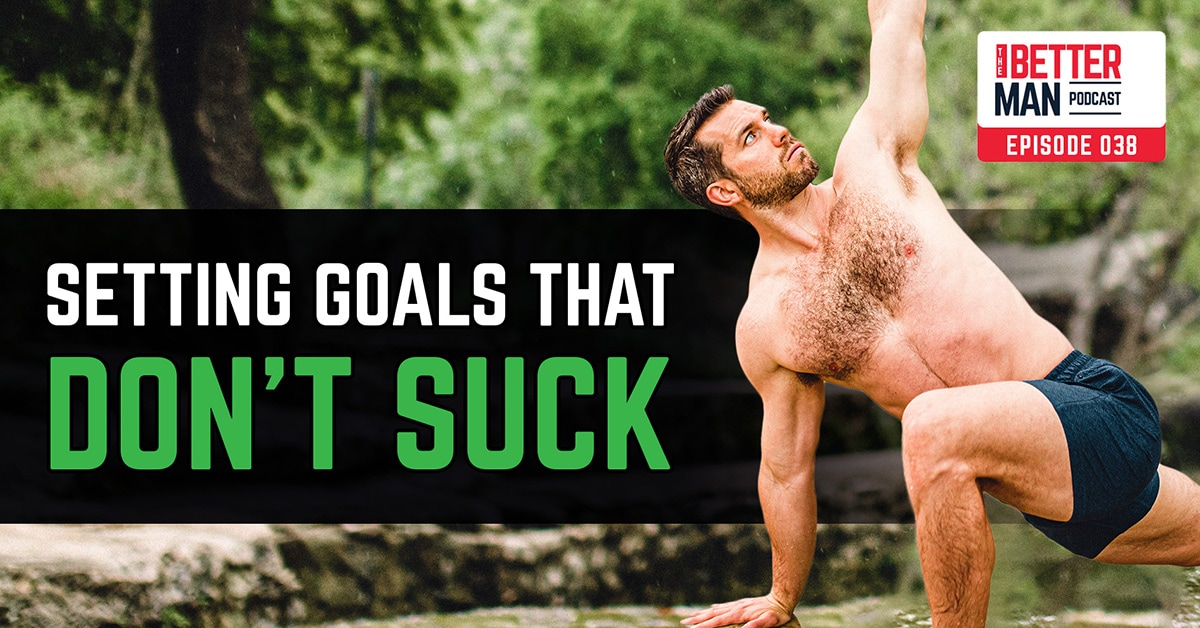
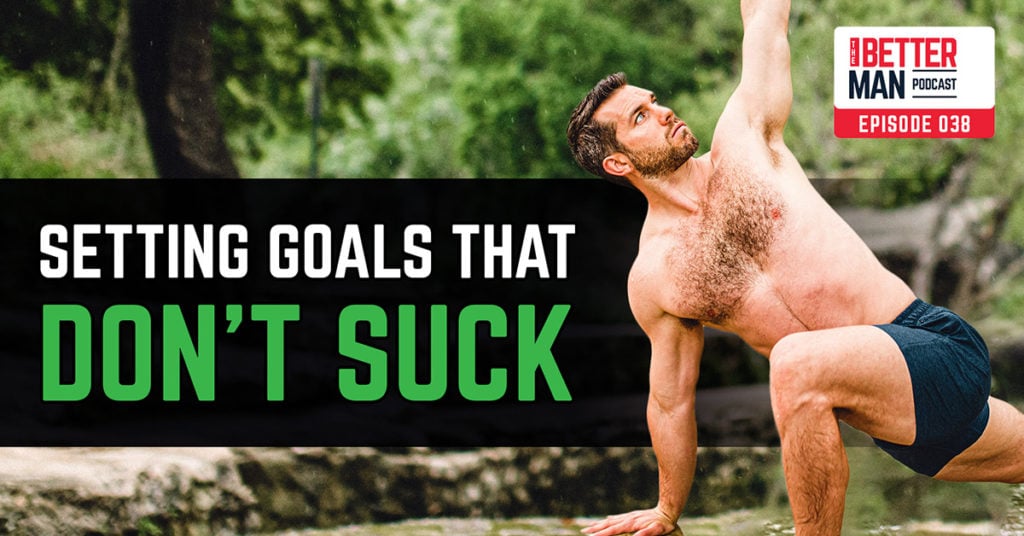

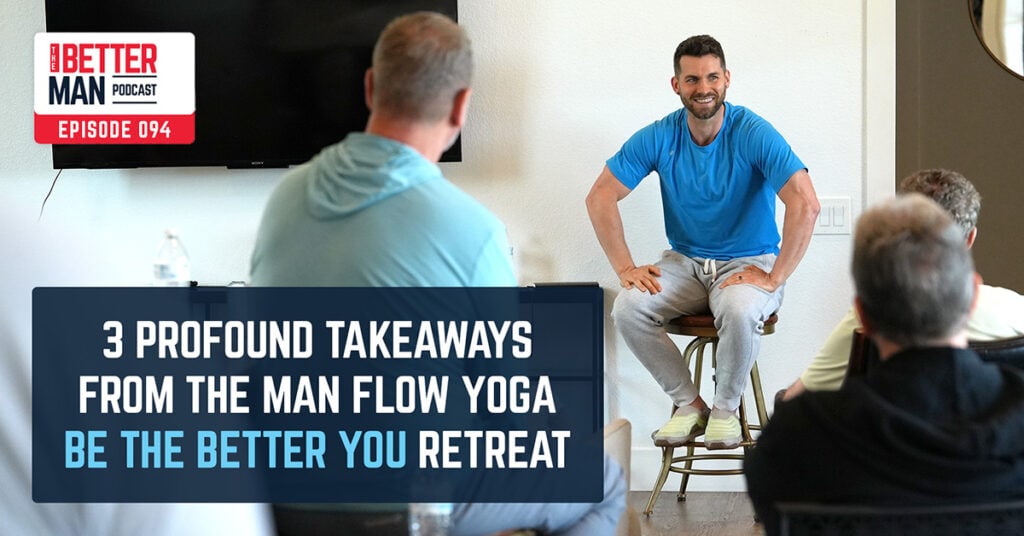
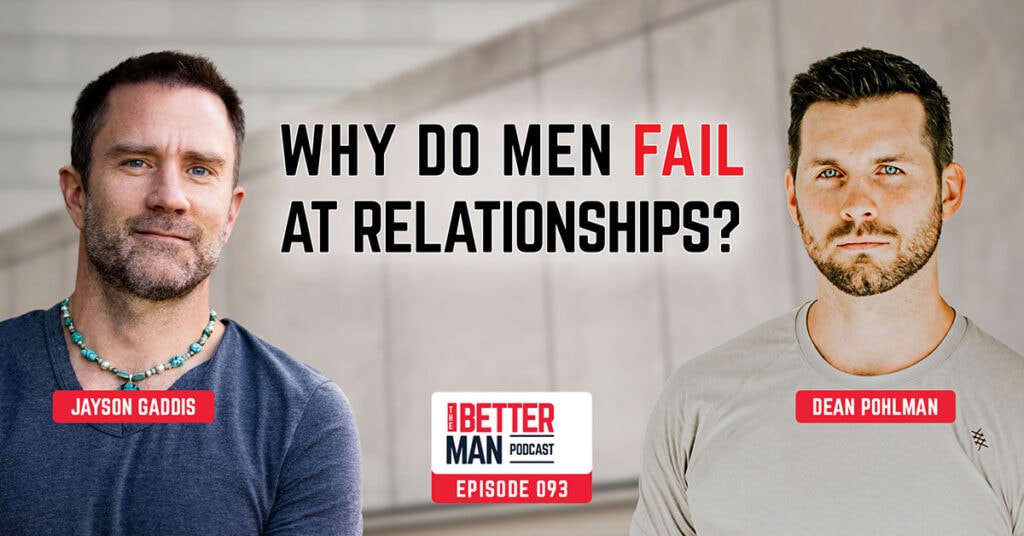
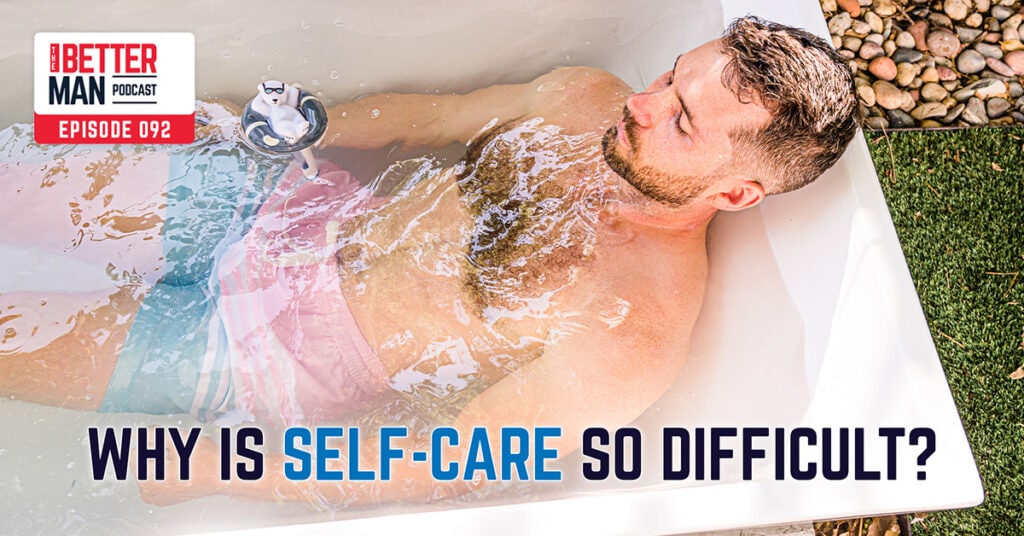
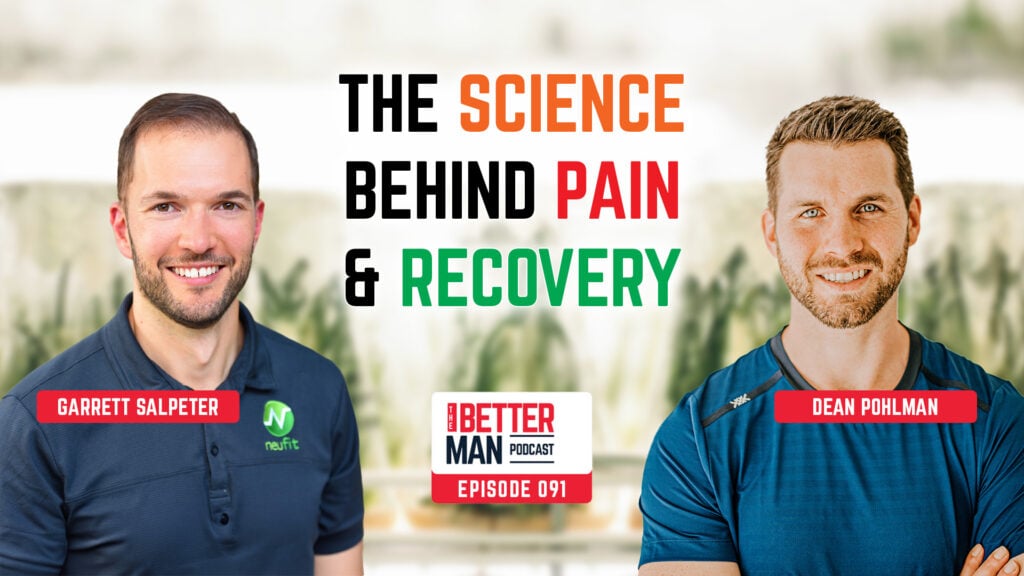
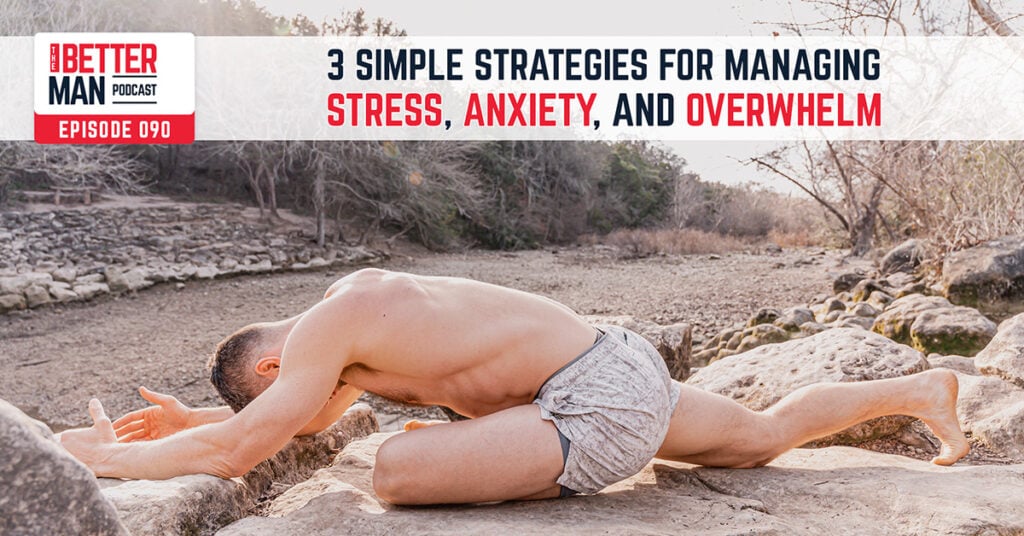
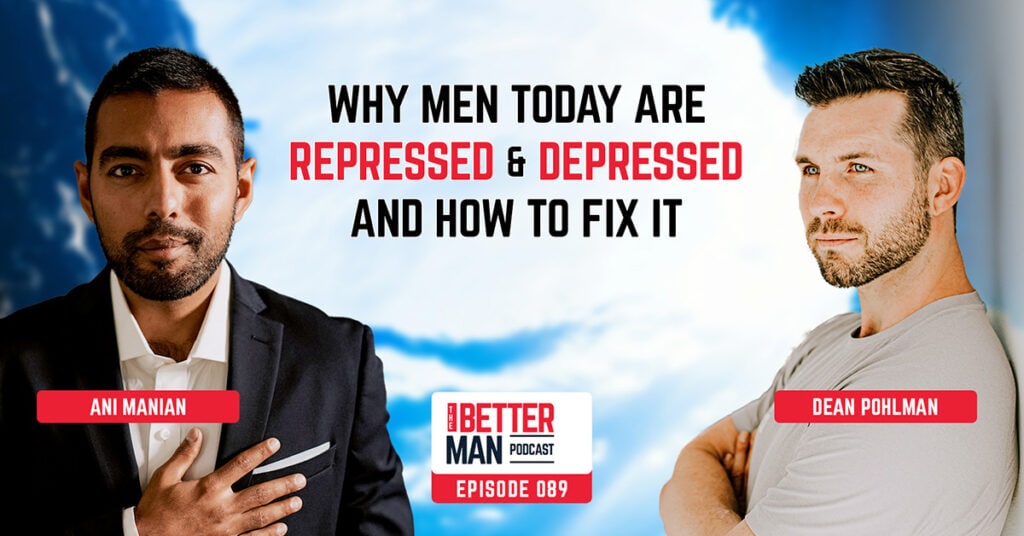
Hi Dean I am an aspiring bodybuilder, and I have noticeable gains in physique, but I am starting to feel “muscle bound” with less flexibility–all reasons to be giving your programs in Man Yoga a serious effort. After about a week I already sense some improvement in my flexibility. Thank you!
My particular question is should yoga and strength training be performed simultaneously? Same days? Are there any suggestions on how to improve my bodybuilding goals {size and definition} in conjunction with regularly using your Man Yoga program? Thanks again.
We always suggest combining yoga with other forms of fitness, like weight lifting for instance. Everything benefits! The actual scheduling comes down mostly to what you have time for but yoga can be combined as a warm-up or recovery from lifting. If you’re on Facebook, look for the Man Flow Yoga Community private group. It’s a wonderful place for specific questions and inspiration1